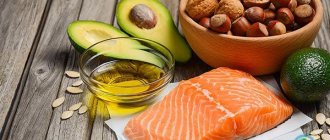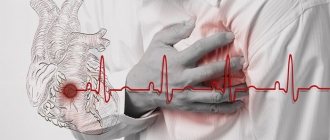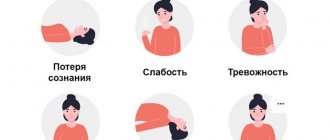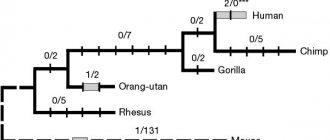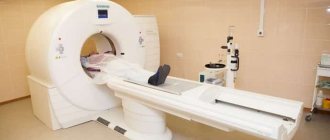Vegetative-vascular dystonia: to treat or not to treat?
The disease itself, as well as its symptoms, have been known for a long time.
VSD in adolescents is successfully diagnosed, but an unambiguous method of treating the disease has not yet been found, since doctors have not yet been able to fully decipher the pathology itself. So far, doctors have more complete information only about the peripheral effects of neurological problems in the regulation of cardiac and vascular activity. However, it is still not clear how infections influence the onset and course of the disease.
At the moment, most experts are inclined to consider the main and most common cause of vegetative-vascular dystonia in adolescents to be stress.
The treatment method depends on the cause of the disease. Since stressful situations are considered the main ones, drug treatment for VSD is practically not carried out. Prevention measures and treatment are limited to reducing the number of stressful situations, improving the general emotional state and redistributing mental stress.
However, with exacerbation of vegetative-vascular dystonia, it is possible to use medications in therapeutic doses. Such methods stop attacks of vascular disorders and normalize the teenager’s condition.
The flexibility and adaptability of a teenager’s nervous system is one of the reasons why doctors look at the manifestation of symptoms of the disease without much alarm. In young children, the processes occur even faster and easier, therefore, the prognosis is usually favorable.
Prevention of vegetative-vascular dystonia in children and adolescents
Vegetative-vascular dystonia in adolescents and young children can be practically asymptomatic, especially if adults pay due attention to the prevention of VSD.
We are talking about leading a healthy lifestyle, playing sports at both an amateur and professional level, diet, as well as sleep and wakefulness. For better vascular condition, it is necessary to diversify your diet by adding more fiber and vitamins, as well as foods containing potassium and magnesium. But it is better to exclude fatty and fried foods or at least reduce their consumption to a minimum. The reason for avoiding thermally processed fats is the risk of developing atherosclerotic processes. Naturally, during this period it is best to increase the child’s time in the fresh air.
Modern views on the treatment of vegetative dystonia syndrome in children
Autonomic dystonia syndrome (VDS) is one of the most common childhood diseases. It is known that when visiting a pediatrician, SVD accounts for 50–75% of the number of patients with non-infectious pathologies. In this case, patients may experience changes in various organs and systems that are functional in nature. In this way, dystonia is fundamentally different from other diseases, which should not be a reason for reassurance, since the transition of VDS into such psychosomatic diseases in adults as coronary heart disease, hypertension, bronchial asthma is possible. The lack of adequate therapy can lead to a deterioration in the patient's condition. In this regard, it is necessary to search for new effective methods of treating children with VDS.
Typically, treatment of a patient with SVD is carried out over a long period of time. In this case, it is very important to take into account the nature of autonomic disorders (the predominance of activity of the sympathetic or parasympathetic parts of the autonomic nervous system), the severity of clinical manifestations, as well as the psycho-emotional characteristics of the child’s personality. Preference in the treatment of children with VDS should be given to non-drug methods. This is sufficient for mild cases of SVD. In severe cases, drug therapy is also used. At the same time, chronic foci of infection and concomitant diseases are treated.
Therapy should begin with normalizing the daily routine: it is very important that night sleep is at least 8–10 hours, and that the child walks in the fresh air for at least 2–3 hours a day. When constructing classes, it is advisable to alternate physical and mental stress. It is necessary to eliminate physical inactivity, limit television viewing to 1 hour per day, as well as computer work, which should be dosed taking into account the child’s age.
Physical education classes. Children with SVD should do morning exercises. Swimming, skiing, skating, measured walking, playing table tennis, and badminton have a beneficial effect on patients. Group sports (football, basketball, volleyball), as well as boxing, wrestling, and kickboxing are not recommended.
Nutrition. A child with VDS should receive adequate nutrition with sufficient amounts of minerals and vitamins. Children with increased sympathoadrenal activity and labile arterial hypertension need to limit the consumption of table salt, tea, and coffee. It is advisable to exclude smoked meats, spicy foods, and chocolate from the diet. Children with increased parasympathetic activity and arterial hypotension are recommended to eat food containing a sufficient amount of liquid, as well as marinades, tea, coffee (preferably with milk), chocolate and chocolate candies, kefir, buckwheat porridge, peas. It is advisable for children with SVD to take honey at night for 2–3 months, as well as various juices, infusions, compotes from sea buckthorn, viburnum, rose hips, rowan, carrots, lingonberries, chokeberry, raisins, dried apricots.
Psychotherapy. An important place in the treatment of children with VDS should be given to individual rational psychotherapy aimed at correcting the internal picture of the disease with a reorientation to non-drug methods of self-regulation. At the same time, it is very important that the attending physician inspires confidence not only in the child, but also in his parents. You can often see a good therapeutic effect by convincing the patient only to change his lifestyle, diet, and exercise.
Water procedures. Typically, the following water procedures are effective for children with SVD: swimming, circular shower, sauna, medicinal baths. Balneotherapy should be carried out depending on the characteristics of autonomic disorders. For children with increased sympathetic activity, baths with the addition of sedative herbs are indicated; for vagotonia, salt pine, narzan, radon baths, dousing, and rubbing with cold water are recommended.
Physiotherapeutic treatment. For SVD, galvanization using the reflex-segmental technique, paraffin, and ozokerite for the cervical-occipital region are widely used. The choice of technique should be made taking into account the direction of the initial autonomic tone. For vagotonia, electrophoresis on the collar zone with a 5% calcium chloride solution, 1% caffeine solution or 1% mesatone solution is indicated. For sympathicotonia, electrophoresis with a 2% aminophylline solution, 2% papaverine solution, and 4% magnesium sulfate solution is used.
Massage. For vagotonia, especially when combined with a decrease in blood pressure, a general massage is prescribed, as well as a massage of the calf muscles, hands and cervical-collar area; with a predominance of sympathetic tone - massage in the areas of the spine and cervical-collar region.
Drug therapy. If the therapeutic and recreational measures described above are insufficiently effective, drug therapy is prescribed. It is advisable to begin drug treatment with herbal medicine. For children with increased excitability and anxiety, it is recommended to prescribe herbal infusions that have a sedative effect: sage, hawthorn, valerian, motherwort, St. John's wort (Table 1). Courses of treatment are usually long - for 3–12 months. The drugs must be alternated every 2–4 weeks (with a two-week break between courses).
In addition to tinctures and extracts, various types of tea can also be used from herbal remedies. Of the valerian preparations, “valerian tea” has proven itself best: 1 tbsp. Brew a spoonful of crushed valerian root with one glass of boiling water in the evening, cover with a saucer and the next day take the infusion in 3-4 doses. In the same way, motherwort tea is prepared, which has even greater calming properties than valerian. In case of acute neurotic reactions, a “valerian cocktail” can be used as a fast-acting “fire extinguisher”: 5–15 ml of valerian tincture, i.e. 1 teaspoon, dessert or tablespoon, half with water. The sedative effect of tableted valerian extract is less convincing.
If the calming effect of herbal medicines is insufficient, anxiolytics and antipsychotics are used in the treatment of children with SVD (Table 2).
The main target of action of neuroleptics and anxiolytics are the structures of the limbic-reticular complex, in which the higher vegetative and emotional centers are concentrated. The close connection between mental and autonomic functions carried out by the limbic system makes it possible to understand why these drugs, while reducing emotional excitability, simultaneously have a normalizing effect on autonomic-visceral disorders that accompany VDS.
When prescribing tranquilizers, it is necessary to take into account the characteristics of the patient’s psycho-emotional state and the direction of autonomic dysfunction (vagal or sympathicotonia). For children with increased levels of anxiety and sleep disturbances, tranquilizers with a pronounced sedative effect are indicated: seduxen (Sibazon, Relanium, Diazepam), Phenazepam, Tazepam, Atarax. In case of a hyposthenic neurotic state, arterial hypotension, drugs with a moderate activating effect are prescribed - “daytime tranquilizers” (Grandaxin, medazepam), which are usually given in two doses - morning and afternoon. It is important to consider that for SVD of the sympathicotonic type, it is advisable to use Seduxen (1 tablet - 0.005 g), Tazepam (1 tablet - 0.01), Phenazepam (1 tablet - 0.5 and 1 mg). For children with SVD of the vagotonic type, Amizil (1 tablet - 1 mg or 2 mg) is indicated; for the mixed version of SVD - Bellaspon (1-3 tablets per day), Rudotel (1 tablet - 0.01 g), Grandaxin (1 tablet - 0.05 g). The duration of tranquilizer prescriptions is no more than 4–6 weeks, repeated courses are possible.
Neuroleptics are indicated for children with acute and chronic anxiety, motor restlessness, the presence of tics, hypochondria, fears, as well as persistent pain. They reduce the reaction to external stimuli, have a vegetotropic effect, and are recommended for use when tranquilizers are ineffective. The most commonly used drugs from this group are Frenolone at a dose of 5–15 mg/day, thioridazine (Melleril, Sonapax) for preschool children at a dose of 10 to 20 mg/day, for school children at a dose of 20–30 mg/day, and Teralen at a dose of 5–15 mg/day. Frenolone and Sonapax give a good effect for cardialgia. Teralen also has antihistamine properties.
If necessary, antipsychotics can be combined with anxiolytics.
Drugs that improve metabolic processes in the central nervous system - neurometabolic stimulants . They are indicated for children with severe manifestations of VDS. Neurometabolic stimulants not only have a positive effect on metabolic processes and blood circulation in the brain, but also stimulate redox processes, enhance glucose utilization, improve the body’s energy potential, increase the resistance of brain tissue to hypoxia, help improve memory, and facilitate the learning process. For this purpose, you can prescribe Nootropil (0.4–0.6 mg/day), Encephabol (0.1–0.2 mg/day), Aminalon (0.5–1 g/day), Pantogam (0.5 –0.75 g/day), Phenibut (0.5–0.75 g/day), glycine (0.2–0.3 g/day). Along with these drugs, glutamic acid and Cerebrolysin 1 ml intramuscularly are used (course of treatment - 10-15 injections). Treatment with these drugs is carried out 2-3 times a year.
Children with vagotonic SVD are prescribed herbal psychostimulants that increase the activity of the sympathetic nervous system. For this purpose, you can use caffeine, tincture of ginseng, Schisandra chinensis, eleutherococcus, Rhodiola rosea, zamanikha, pantocrine. All these drugs are prescribed at the rate of 1-2 drops per 1 year of life in the first half of the day: 2 times a day 30 minutes before meals for 1-2 months, alternating them with each other (with breaks of 2-3 weeks).
For persistent headaches and intracranial hypertension, courses of Diacarb and diuretic herbs are indicated. To improve microcirculation, Trental, Cavinton, Vinkapan are prescribed.
Currently, in the treatment of SVD, drugs have begun to be used that contain coenzymes, microelements and vitamins in isolated form or in combination: Coenzyme Q10, L-carnitine, Betacarotene, calcium hypochlorite, calcium lactate, calcium phosphate, Magne B6, Multi- Tabs and Multi-Tabs with beta-carotene.
It is important to consider that for sympathicotonia, preference should be given to potassium preparations and vitamin B1, while for vagotonia - calcium, phosphorus, vitamins B6, C.
Treatment of arterial hypertension. For arterial hypertension, basic therapy is indicated, including vascular and nootropic drugs. For this purpose, you can prescribe Oxibral (2.5 ml of syrup 3 times a day), Vinpocetine (1 tablet - 5 mg), Cavinton (1 tablet - 5 mg), Cinnarizine (1 tablet - 25 mg). If treatment is ineffective, antihypertensive drugs are prescribed. It is important in the treatment of patients with arterial hypertension to individually select drugs for a particular person. For stable arterial hypertension and a hyperkinetic type of blood circulation (tachycardia, a predominant increase in systolic blood pressure), the administration of small doses of β-blockers is indicated: atenolol - 0.7 mg/kg once a day, propranolol (Obzidan, Inderal) - 0.5 mg/kg kg 3-4 times a day. In case of hypokinetic type of blood circulation (bradycardia, increase in predominantly diastolic blood pressure), treatment begins with the prescription of diuretics (Hypothiazide, Triampur compositum). If there is no effect, the prescription of the angiotensin-converting enzyme inhibitor captopril (0.5 mg/kg 3 times a day) is indicated. In pediatric practice, the long-acting drug enalapril (0.02 mg/kg once a day) is often used.
Relief of hypertensive crises. First of all, it is necessary to create the most calm environment possible. In order to reduce blood pressure in a child with VDS, you can prescribe sedatives (Seduxen - 1 tablet - 5 mg or 1-2 ml IV), diuretics (Furosemide, Lasix), potassium supplements (Panangin - 2 tablets), selective β - adrenergic blocker atenolol at a rate of 0.7 mg/kg.
Treatment of vegetative paroxysms is quite difficult, since crises have a circadian pattern and are strictly individual. The predominance of activity of one or another part of the autonomic nervous system during a crisis may be compensatory; By suppressing this department, you can aggravate and intensify the crisis. It is not so much the treatment of the crisis itself that is important, but complex and long-term therapy during the interictal period.
For sympathoadrenal paroxysms in children, tranquilizers, sedatives, and β-blockers are used. It is advisable to prescribe a β-blocker for another 4–5 days after the crisis has stopped, possibly in combination with sedative medications. If the patient has repeated sympathoadrenal crises and a connection has been identified between their occurrence and psycho-emotional stress, then a β-blocker can be prescribed in a small dose for a longer period of time. It is necessary to eliminate the provoking factor and give the patient a course of psychotherapy. For children with recurring parasympathetic crises, it is advisable to undergo a long course of treatment (1–2 months) with one of the belladonna preparations. For this purpose, you can use Bellaspon, Bellataminal, etc. They are usually prescribed at night (1/2–1 tablet) depending on age. Against this background, treatment for SVD should be continued.
If a child has a vegetative paroxysm, it is necessary to determine the characteristics of its course (vagoinsular, sympathoadrenal or mixed), and then, taking this into account, provide the necessary assistance (Table 3).
In conclusion, it should be said that the relief of vegetative crises in children, as well as the treatment of SVD, requires an individual approach with the selection of appropriate methods and drugs. Even with adequate therapy for VDS, monitoring the effectiveness of therapy is necessary, since paradoxical reactions can be observed, since vagotonia or sympathicotonia in their pure form practically does not occur in children. By replacing one treatment method with another, you can achieve a positive therapeutic effect in most cases.
Literature
- Belokon N. A., Kuberger M. B. Heart and vascular diseases in children. In 2 volumes. M.: Medicine, 1985.
- Autonomic dysfunction in children and adolescents (clinic, diagnosis, treatment) // Kozlova L. V., Samsygina G. A., Tsaregorodtseva L. V. et al.: Educational manual. Smolensk, 2003. 80 p.
- Vegetative-vascular dystonia in children (clinic, diagnosis, treatment) // Belokon N. A., Osokina G. G., Leontyeva I. V. et al.: Method. rec. M., 1987. 24 p.
- Belyaeva L. M., Khrustaleva E. K. Functional diseases of the cardiovascular system in children. Minsk: Amalfeya, 2000. 208 p.
- Cardiology of childhood: Textbook / ed. Yu. M. Belozerova, A. F. Vinogradova, N. S. Kislyak and others. Tver, 1995. 266 p.
- Leontyeva I.V. Arterial hypertension in children and adolescents // Lectures for doctors. M., 2000. 62 p.
- Lectures on pediatrics. T. 4. Cardiology / ed. V. F. Demina, S. O. Klyuchnikova, N. P. Kotlukova and others. M., 2004. 412 p.
- Makolkin V.I., Abakumov S.A. Sapozhnikova A.A. Neurocirculatory dystonia (clinic, diagnosis, treatment). Cheboksary: Chuvashia, 1995. 250 p.
- Meshkov A.P. Functional (neurogenic) heart diseases. N. Novgorod: NGMA, 1999. 208 p.
- Practical guide to childhood diseases / ed. G. A. Samsygina, M. Yu. Shcherbakova. T. 3. 735 p.
- Recommendations for the diagnosis, treatment and prevention of arterial hypertension in children and adolescents. M., 2003. 43 p.
- Shvarkov S. B. Modern concept of autonomic disorders and their classification // Pediatrics. 2003. No. 2. P.108–109.
- Tsaregorodtseva L.V. Discussion issues of vegetative dystonia syndrome in children // Pediatrics. 2003. No. 2. P.103–105.
- Tsaregorodtseva L.V. Treatment of vegetative dystonia syndrome // Pediatrics. 2003. No. 2. P. 52–56.
- Encyclopedia of drugs. M.: LLC "RLS-2005", 2004. 1440 p.
- Human Blood Pressure Determination by Sphyqmomanometry / D. Perloff, C. Grim, J. Flack et al. // Circulation. 1993; 88:2460–2467.
- Update on the 1987 Task Force Report on the high blood pressure in children and adolescents, National High Blood Pressure Education Program Working Group on Hypertension Control in Children and Adolescents // Pediatrics. 1996; 98(4, Part 1): 649–658.
L. V. Tsaregorodtseva , Candidate of Medical Sciences, Associate Professor of the Russian State Medical University, Moscow
Changes in body temperature
As noted above, vegetative-vascular dystonia in adolescents has a huge list of different symptoms. However, an important indicator that the disturbances are not caused by more serious diseases requiring immediate medical attention can be the absence of fever.
The combination of several common symptoms of VSD and elevated temperature indicates the presence of an infection or a source of inflammation in the body. Naturally, only an experienced doctor can diagnose an infection and promptly begin treatment of an infectious disease. Therefore, at the first signs of an increase in temperature, you should seek medical help rather than try to relieve the symptoms on your own.
Types of vegetative-vascular dystonia:
cardiac type of vegetative-vascular dystonia
Symptoms: tachycardia (rapid heartbeat), arrhythmia (interruptions in the heart), “heart pain,” respiratory arrhythmia and a feeling of lack of air. Interruptions in the functioning of the heart cause a feeling of lack of oxygen. With VSD, pain in the heart area does not become a harbinger of a heart attack and does not affect the heart in any way, as evidenced by the patient’s echocardiogram. To diagnose this type of vegetative-vascular dystonia, the study of heart rate variability is very effective.
hypertensive (hypertensive) type of vegetative-vascular dystonia
Symptoms: high blood pressure, heaviness in the head (in the back of the head), darkening in the eyes, weakness, nausea, increased emotionality, panic attacks. In the case of vegetative-vascular dystonia, high blood pressure occurs often, but passes quickly, and is accompanied by other symptoms of VSD.
hypotonic type of vegetative-vascular dystonia
Symptoms: low blood pressure, loss of strength, muscle weakness, irritability, apathy, tearfulness, fainting, headache.
mixed type of vegetative-vascular dystonia:
Symptoms: “pressure jumps” (high blood pressure is replaced by low blood pressure) and other symptoms of VSD occur (see above). This type of vegetative-vascular dystonia occurs most often.
Vegetative-vascular disorder is also divided by severity: from mild to severe, which is associated with the presence, frequency and duration of panic attacks, as well as the severity of other symptoms of VSD. The longer a person suffers from vegetative-vascular dystonia and does not take measures to treat it, the more the degree of the disease worsens. In mild forms of vegetative-vascular dystonia, the symptoms are mild and can only occur during emotional or physical stress. In severe forms of vegetative-vascular dystonia, the symptoms are pronounced and persistent, panic attacks occur frequently and their duration increases.
Methods of drug treatment of VSD in adolescents
The main way to relieve painful conditions associated with exacerbation of vegetative-vascular dystonia in adolescents and young children is to reduce stress levels and develop stress resistance as a method of resisting neuroses. Despite this, for more complex manifestations and symptoms such as regular headaches, fainting, sleep disorders, lack of appetite, tearfulness and irritability, decreased emotional background, the doctor may prescribe a course of the following medications:
- sedatives that calm the nervous system;
- antidepressants that improve the overall emotional state;
- complexes of vitamins and minerals that strengthen the body as a whole.
Treatment is carried out only under the supervision of a neurologist and only after an examination that can reveal abnormalities in the condition of the circulatory system.
With age, most symptoms of vegetative-vascular dystonia in adolescents go away on their own. However, one cannot rely only on this. By using the full range of preventive methods, you can reduce the need for treatment or make it more gentle, but you cannot completely eliminate the use of medications or follow general recommendations. General recommendations include:
- timely diagnosis and treatment of any infectious diseases;
- establishing and maintaining a daily routine;
- proper distribution of the load over a certain period of time to reduce fatigue;
- regular walks and outdoor activities;
- reducing time spent on a computer, tablet, phone;
- high-quality and regular massage - therapeutic and relaxing;
- monitoring intracranial pressure and the condition of the spine, including posture correction.
Exacerbation of vegetative-vascular dystonia in adolescents can cause temporary exemption from physical education, as well as a reason for registering with a neurologist. In addition, regular examination helps to identify VSD in adolescents during the “lull” period and promptly prescribe treatment for the vascular system.
Why is regulation disrupted in a child’s body?
The main cause of VSD in children and adolescents is a hereditary predisposition. If one or both parents suffer from a disorder of autonomic regulation, or showed such a tendency in childhood, then the child is at risk for VSD.
But even in children who were not initially prone to dystonia, its symptoms may appear. This happens after severe psychological stress, infections, injuries, poisoning. In this case, the child’s body spends too much energy on recovery, and maintaining normal regulation becomes difficult.
In elementary school, many children begin to suffer from headaches, insomnia, and it becomes difficult for them to memorize new things and remember what they learned before. Primary and secondary school students are often diagnosed with gastritis, dyskinesia of the gallbladder and biliary tract, chronic constipation or diarrhea. All this may be a consequence of school loads and attending extra classes. As a rule, many symptoms of VSD go away if the child is given the opportunity to rest more and also undergo one or two courses of treatment with the amino acid drug Eltacin®.
Children who play sports professionally should receive amino acids regularly to prevent heart problems. High physical activity without additional amino acid support can lead to the development of cardiomyopathy and heart failure.
During active growth and hormonal changes in adolescence, lack of energy in the nervous tissue and myocardium can lead to frequent headaches, fainting, nervous exhaustion, functional arrhythmia and tachycardia, extrasystole, and a feeling of heaviness in the chest. Without treatment, these symptoms do not go away, and over time, the violation of autonomic regulation only intensifies. Taking glycine, cystine, and glutamic acid helps to give the body the necessary support in a timely manner and reduce the manifestations of VSD.
Symptoms
- Changes in the condition of the skin (the skin acquires a different shade of color and a different pattern of blood vessels).
- Improper functioning of the sweat and sebaceous glands.
- Rashes, itching, swelling.
- Disruption of the endocrine glands, which leads to weight loss or weight gain in the child.
- Excessive acne.
- Slowing or accelerating puberty.
- Rise and fall in body temperature for no particular reason.
- Change of behavior. The drowsy state is replaced by panic and causeless anxiety.
- Breathing problems.
- The appearance of shortness of breath.
- Gastrointestinal tract disorder.
- Nausea and vomiting, diarrhea, disruption of the bile ducts, pain in the abdomen, and a lump in the throat are common.
The presence of such symptoms is rather a beacon for the pediatrician, according to which he can prescribe a set of diagnostic measures and appropriate treatment.
Do not self-diagnose or treat. Entrust your child's health to a professional. Only in a clinical setting can a cardiologist correctly diagnose and prescribe optimal and correct treatment. The role of parents is to create favorable conditions in overcoming the disease, while strictly following the doctor’s recommendations.
Types of VSD
Vegetative-vascular dystonia in adolescents is of three types. They have different symptomatic pictures:
- VSD of the hypertensive type is manifested by increased blood pressure, tachycardia (increased heart rate), flashing “spots” before the eyes, chills, headache, decreased appetite and sweating. Moreover, blood pressure can increase not only with increased physical activity or mental stress, but also in a state of complete rest. There is anxiety and tension. A crisis may begin at any moment, accompanied by panic, overexcitement and an intensification of existing symptoms.
- VSD of the hypotonic type is characterized by a decrease in blood pressure, bradycardia (decreased heart rate), lethargy, weakness, pale skin, sweating combined with chills. The patient is irritable and prone to fainting. Nausea may be present. VSD of the hypotonic type increases intestinal motility and causes increased secretion of enzymes, which brings additional discomfort to the child, manifesting itself in the form of diarrhea, heartburn and rumbling in the abdomen.
- VSD of the vagotonic type is determined by the presence in a teenager of pain in the heart area, dysfunction of the gastrointestinal tract (nausea, vomiting, constipation), and increased secretion of the sebaceous glands. Patients with VSD of the vagotonic type are anxious, have a tendency to obesity, suffer from insomnia, get tired quickly, and have swelling of the extremities.
Such manifestations of VSD of the vagotonic type are a real disaster for a teenager, which leads to limitations in his capabilities and reduces the quality of social life. Obesity becomes the basis for the development of puberty complexes, deprives confidence and contributes to the development of isolation.
A drop in blood pressure can cause redness of the skin. The teenager will be embarrassed by such manifestations, which may lead to social phobia.
Principles of treatment of VSD
Solving health problems begins with diagnosis. Depending on the leading symptoms, the child is examined by a neurologist, gastroenterologist, cardiologist, or dermatologist. But the final verdict of “vegetative dysfunction” will be made by a neurologist.
Treatment of VSD in a child is primarily associated with reducing the emotional and mental stress to which he is exposed every day. If the balance between the sympathetic and parasympathetic parts of the autonomic nervous system is disturbed, any excessive tension can provoke malaise. Schoolchildren often suffer from symptoms of VSD during school hours, but feel fine during the holidays. If a child begins to study poorly or get sick more often, most likely he is simply too tired, which caused the manifestation of symptoms.
Remember, if you leave dystonia in a child without attention and treatment for a significant period of time, you risk his health, since the mechanisms of impaired regulation are gradually consolidated, and in the future it will be much more difficult to correct them. Vegetative-vascular dystonia, not compensated in childhood, can cause chronic diseases in adulthood.
To improve the child’s condition, not only a gentle regimen is needed, but also medication to help establish cell metabolism and improve autonomic regulation. Eltacin® , a drug made from the amino acids glycine, glutamic acid, and cystine, copes with this task
Eltacin® acts gently, gradually reducing the intensity of symptoms of VSD in a child, helping to overcome age-related crises and improve school performance.

